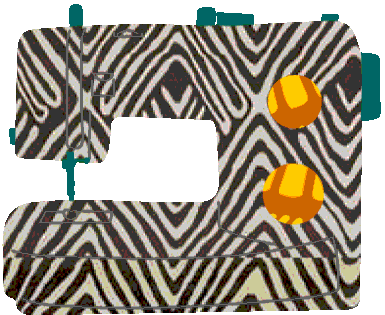The Rise of Sustainable & Eco-Friendly Interior Design
Home and interior design forms a vital part of our personal expression. The colour patterns we use within our homes say as much about us as the clothes we wear, as do the fabrics of our sofas, the hand-painted art on our porcelain sets and type of cutlery and kitchen tools we work with. Stainless steel dominated kitchens speak of bold, extrovert characters, whereas those favouring wooden features emit a warm, home-body vibe.
Upon entering someone’s home we should get an immediate sense of who they are and what they are drawn to – in life as well as within the comforts of their home. The marine theme throughout our neighbour’s bathroom surely wasn’t an accident. It was most likely chosen due to a love and/or fascination for/with all things maritime, or because the colours and aesthetics have a soothing effect on them. Furniture, wallpaper and décor choices tell us stories that bring us closer to understanding the inhabitants of these beautifully designed spaces.
Interior design is an important niche within the fashion industry – after all, every fashionista needs a place to store her SoleRebels shoes and sandals, a place to hang her favourite Lisa Folawiyo dress. There is no reason why the furniture and storage features that house our most fashionable and treasured items should look dull and uninspired: they should act as a preview to what awaits inside, namely a plethora of unique and innovative styles. And it’s all possible using sustainable, locally sourced and produced, eco-conscious products to achieve a look straight out of a copy of Architectural Digest.
One company focused on furniture design Fashionomics Africa is particularly taken with, is the Freetown-based Pangea, founded by Margaret Kadi. In a previous interview, she explained, “I have always been interested in interiors and the choices people make in decorating their homes. I have an eclectic style, so I love homes that bring in different elements and textures as they make such a great impact in a space.” The Pangea lifestyle brand is an excellent example of the noticeable shift within the world of interior design.
“I think artisanal furniture and home decor is very important because it helps me empower our artisans who build the furniture. I think if people had the choice, they would always choose artisanal furniture because the customer gets to be involved in the design process of their product. Adding value to raw materials is also a big part of why I focus on artisanal furniture, we transform the timber into truly unique pieces to the customers' specifications,” Margaret told Fashionomics Africa. With access to so many ready-made furniture shop franchises, it is important to remind ourselves that the better approach to a sustainable home-design indeed lies with the hand-made or second-hand variety, and brands like Pangea are pushing this awareness.
The interior design industry has caught on to the demands of a new era – one that is determined to do good by our planet and avoid the mistakes of the past. Creative, forward-thinking brands such as Miti-Meth, the Nigerian company specialized in “woven wonders from natural fibres”, have found practical solutions to environmental problems by ways of clever and innovative home décor pieces including vases, table runners and mirrors. These stunning pieces are made from natural fibres such as aquatic weeds like water hyacinth and typha grass, as well as agricultural waste forms like maize husks and banana bark, which would otherwise clog up water systems or take over lands with agricultural potential.
Many interior design and architectural brands are now starting to look at the bigger picture: i.e. not just the pieces and materials used to decorate our homes with, but those used to build the actual home and its most important features: floors, walls, roofs and even the entire framework of a house. Anyone who religiously watches the great selection of interior design and home-building shows on Netflix will know just how innovative this industry is in terms of finding ways to work with environmentally friendly products and materials, and just how incredible the finished outcomes look. From earthen floors – also known as cob or poured adobe floors – to green, living roofs that provide insulation, absorb rainwater and promote a buzzing insect and bee life – sustainable homes are the way forward and are slowly becoming accessible to anyone with a bit of creativity, know-how and determination.
There is a movement happening in the world of architecture and interior design, and it is swiftly moving toward a new perspective on the importance of blending in with nature – not just in terms of aesthetics, but the materials used to construct a build. We now have access to natural resources such as hemp, cork and many other eco-friendly materials to build our walls and floors with, non-toxic paint to decorate our walls with and surprisingly simple wood treatments that will keep our cabin walls protected and attractive throughout the winter, without harming the surrounding environment.
If you are currently looking to add new, eco-conscious touches to your home and garden, or are fortunate enough to oversee the build of your very own home, use this opportunity to make informed choices that will benefit your own family as well as the planet. Eco-consciousness has never looked so good and the many brands and companies working towards a sustainable future in architecture and interior design are proof of that. Not only will these choices add beauty and style to your home, they will also leave you with a sense of satisfaction sparked by the knowledge that you have contributed to a good cause and the welfare of our planet.
